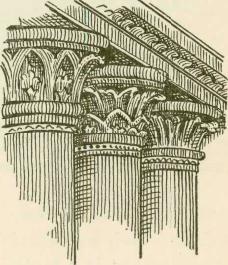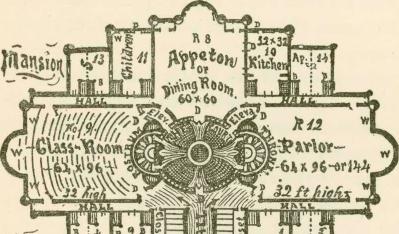ARCHITECTURE AND HOMES. 9(
that belonged both to the cave and the tent. Rude nature gave the early man many examples of stone blocks partly squared. To combine and improve these was to have a stone house or a temple. And the top of this long remained a flat roof, like the primitive rocks. The sloping top of the tent, a skin thrown over a pole or stake, taught men to make the slanting roof as a better rain-shelter. The Mongolians of our day are still fond of the curved roof that shows the
sagging tent-top of its ancient model.
The arch was more difficult to construct and came much later. And later still was developed the rounded dome, a crown to the edifice.
There was an early devel
opment of the column in architecture, for these were copied almost direct froin nature. In columns and capitals, in the Doric, Ionic, Corinthian and Egyptian
orders, the ancients reached the perfection of symmetry and beauty.
The ancient temple was but a house for the gods. And its ground-plan was essentially the same as in the houses for men. This plan has been made out in the ruins of ancient buried cities. When the Christian church was developed it took a fundamentally different plan from the dwelling house.
The architect in building deals with three thingsthe form, color and arrangement of the parts._ He has
these three to deal with, no matter whether his materials of construction be wood, brick or stone. How shall these be combined to secure beauty, utility and economy in the worthy mansions of the new social order?
The brain. itself, as well as the body, is governed by geometric laws of form. The brain is an ellipse having a major and a minor axis, with two focal points of action. Thus it has definite lines and curves for muscular movements, for brain currents, for thoughts and for feelings. Let us make our mansion or temple upon the same basic plan. Then it will be in harmony with the vital laws of man's nature.
Gro uA
same arrangement and proportion in the rooms. But in the larger size, what is figured here as a single small room would be divided into two, three or four.
The central court is an ellipse, reaching from the
The great rooms of the mansion or placed on the major and minor axis.
temple are There is a
bi - lateral symmetry here, the same as in the brain and body.
The size may vary from 16o feet in length to 672 feet, with the

